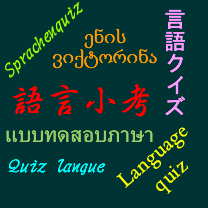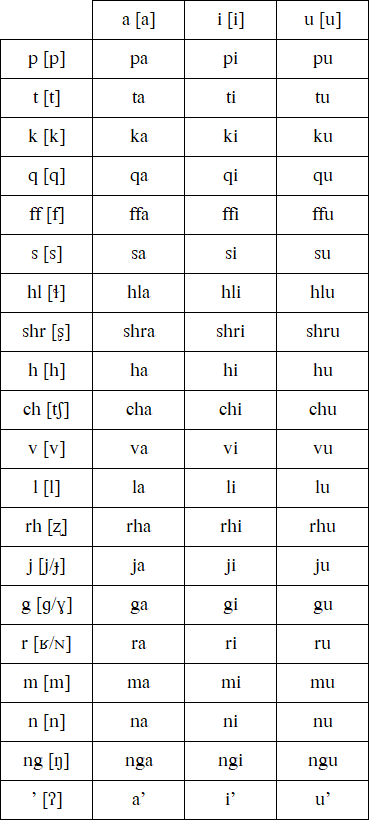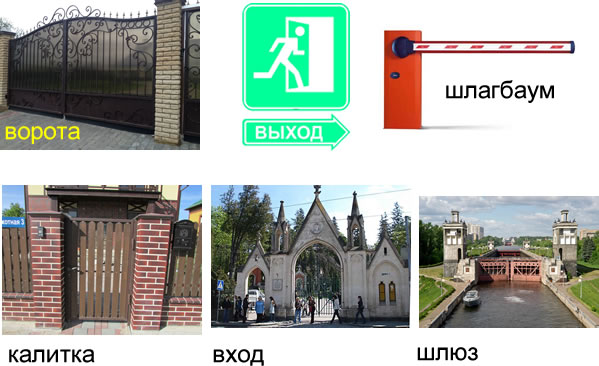
Here’s a recording in a mystery language.
Can you identify the language, and do you know where it’s spoken?

Here’s a recording in a mystery language.
Can you identify the language, and do you know where it’s spoken?
According to an article I came across today, the Inuit Tapiriit Kanatami / ᐃᓄᐃᑦ ᑕᐱᕇᑦ ᑲᓇᑕᒥ (ITK), an organization the protects and advances the rights and interests of Inuit people in Canada, have agreed on a standard way of writing the Inuit languages of Canada.
There are currently nine different ways to write these languages, using either the Roman alphabet (qaliujaaqpait) or the Inkutitut syllabary (ᖃᓂᐅᔮᖅᐸᐃᑦ / qaniujaaqpait).
On 10th September 2019 the ITK decided to adopt a standardised way of writing all the Inuit languages and dialects of Canada using the Roman alphabet known as the Inuktut Qaliujaaqpait writing system. It includes ways to write the sounds found in all these languages, even though some are only used in a few of the languages. More information.

I’m not entirely sure how all the consonants are pronunced – the illustrations of the orthography don’t include pronuciation.
The intention with the new orthography is to provide an alternative, auxiliary writing system that can be used as well as, or instead of, the existing systems. The new writing system will make it easier to produce learning resources and other written material. It is also hoped that more speakers of Inuit languages will write in them, rather than using English.
Eskimo-Aleut languages on Omniglot
Aleut, Alutiiq, Greenlandic, Inuktitut, Iñupiaq, Yup’ik (Central Alaskan), Yupik (Central Siberian)
In a Russian lesson I did yesterday, I learnt that a word for gate is ворота (vorota). Then it gave me a phrase using a different word for gate – Где гейт? (Gde gejt?), which means “Where is the gate?”, and refers to the kind of gate you get at an airport. Slightly confusing. So I wondered what kind of gate is a ворота.
Apparently a ворота is a (double) gate, gateway, portal, goal or sluicegate.
Other Russian words for gate include:
Below are some illustrations on different kinds of gates I found via Google:

Searching for images of words like this seems is interesting, and may help me to remember them.
Sources: Reverso Dictionary & bab.la
Many families raise their children to be bilingual. This might involve one parent speaking one language, and the other parent speaking a different one. Or maybe the family will speak one language at home, and the children will pick up another at school. The hope is that the children will end up speaking both languages fluently.
Recently I got talking to a Czech woman, who told me that she spoke Czech to her sons for the first year or so, while her husband spoke English to them – he doesn’t know much Czech. After that however, she switched to English, as she found it too hard to speak Czech to them all the time. This surprised me, as you’d think that speaking your mother tongue would be easier than speaking another language, but not in this case, it seems.
As they currently live in Wales, the main languages her boys encounter are English and Welsh. Maybe their mother is the only Czech speaker around – I certainly haven’t come across any others. Maybe she feels more comfortable speaking English than Czech after living here for many years.
She told me that they’re soon moving to Czechia, so her sons will have to learn Czech. They’re young (4 and 2), so will probably soon pick it up. Whether her husband learns it is another matter – it is quite a challenging language to learn as an adult.
Are any of you raising your children bilingually?
What challenges do you face, and how do you deal with them?
Have you become more comfortable speaking a foreign language than your mother tongue?